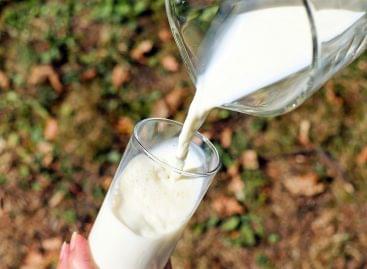Hungarian foreign trade in milk and milk products shows a negative trend
In the past year, Hungarian foreign trade in milk and milk products showed significant changes, as a result of which the balance of the sector turned negative. According to the data of the Milk Trade Organization and Product Council, imports continued to rise in 2023, while exports decreased significantly compared to the previous year.
 One of the reasons for the transformation of liquid milk consumption in Hungary was the introduction of the official price cap, which resulted in a significant drop in domestic sales of UHT milk with a fat content of 1.5 percent. At the same time, demand for 2.8 percent UHT milk increased after official prices were extended to them as well.
One of the reasons for the transformation of liquid milk consumption in Hungary was the introduction of the official price cap, which resulted in a significant drop in domestic sales of UHT milk with a fat content of 1.5 percent. At the same time, demand for 2.8 percent UHT milk increased after official prices were extended to them as well.
The most significant changes in imports included an increase in the import of raw and consumer milk, as well as a significant increase in Slovakian milk imports. There were also changes in the import of more processed dairy products, while the export of soured dairy products and cheese decreased, while the export of raw and consumer milk increased.
Related news
Ministry of Agriculture: further help for the dairy sector, educational institutions can join the school milk program even during the school year
🎧 Hallgasd a cikket: Lejátszás Szünet Folytatás Leállítás Nyelv: Auto…
Read more >The government provides further significant assistance to the domestic dairy sector
🎧 Hallgasd a cikket: Lejátszás Szünet Folytatás Leállítás Nyelv: Auto…
Read more >NGM: another step to strengthen the Hungarian dairy sector
🎧 Hallgasd a cikket: Lejátszás Szünet Folytatás Leállítás Nyelv: Auto…
Read more >Related news
The New Year’s Eve fireworks fair is back: temporary sales will start in department store parking lots at the end of December
🎧 Hallgasd a cikket: Lejátszás Szünet Folytatás Leállítás Nyelv: Auto…
Read more >The first Eastern European non-alcoholic beer turns 50
🎧 Hallgasd a cikket: Lejátszás Szünet Folytatás Leállítás Nyelv: Auto…
Read more >Sausage: pork prices are already going down, but they won’t be cheaper in stores – a significant correction may come in the spring at the earliest
🎧 Hallgasd a cikket: Lejátszás Szünet Folytatás Leállítás Nyelv: Auto…
Read more >






